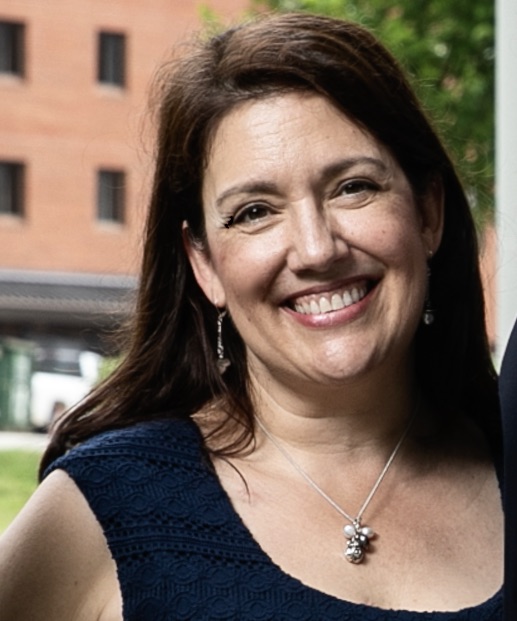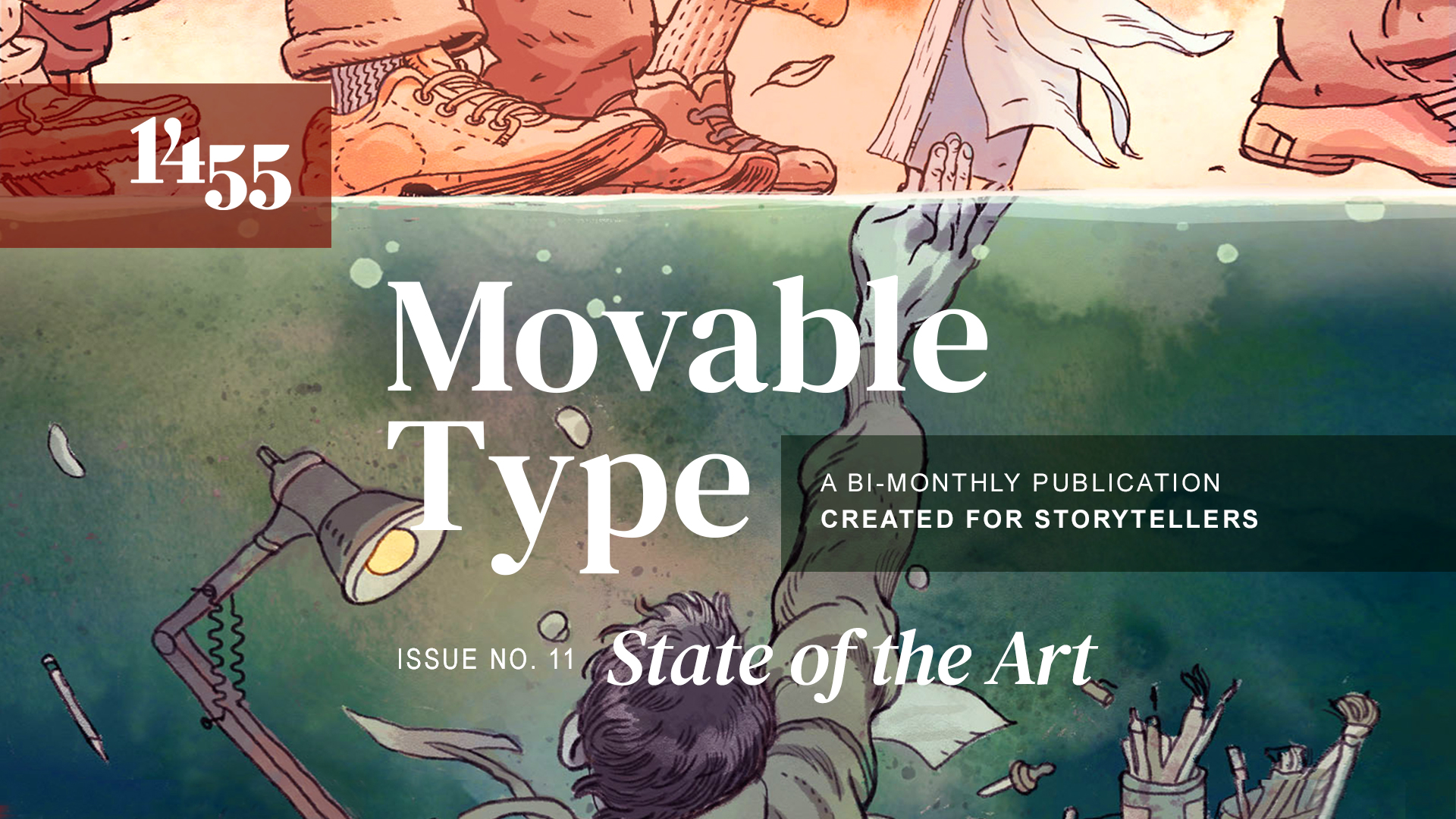Debra Lattanzi Shutika
Dark Academia
As a humanist, I find the Dark Academia subculture intriguing. Dark Academia is a social media aesthetic that emphasizes higher education and the humanities with a gothic bent. As I scroll through Instagram and TikTok, I fall into the gauzy dream of a humanities-inspired aesthetic: old books sitting on a mahogany table next to a cozy armchair, a pot of hot tea, and a roaring fire. It’s easy to get sucked into the images. By reconstituting a mythical past, Dark Academia overlooks the aspects of academia that are truly dark, and fails to celebrate the joys of contemporary academic life.
What amazes me about the images is not that today’s 20-somethings dream about academia through a nostalgia and gothic lens; it is precisely the same fantasy that I once had about the humanities when I was a wide-eyed college freshman nearly 40 years ago. Back then, my first love was literature, and I wanted to be an English major. As a first-generation college student, my parents had misgivings about something that had no clear career path, and college, even then, amounted to a substantial investment. I majored in nursing. Three years after graduation, I enrolled in a graduate English program. My parents were correct: nursing was a highly practical degree. It financed all my M.A. and a good bit of my Ph.D.
Like the social media mavens who fill the “for you” of my feeds with images of academic idyll, I have longed for the life portrayed in the Dark Academia newsfeeds. For a brief period in my doctoral program, my life mirrored that aesthetic. The University of Pennsylvania had a library to die for, and the faculty and students were focused on learning for learning’s sake. We spent afternoons in the lovely reading rooms and took breaks in the nearby coffee shops, cafes, and later the bar/lounge of the Inn at Penn, discussing books, and the history and future of our disciplines. It was amazing, but I have never thought of that time as a dark period in my intellectual life. Quite the opposite. Those days were filled with learning and light.
When I began my life as a college professor–the ultimate objective of the many years of postgraduate study–I was saddened to realize that my intellectual life would drastically change. As a new professor, I had to master college teaching, revise my dissertation into a publishable book, and serve on departmental committees. Nothing out of the ordinary. In fact, my department colleagues worked hard to ensure my teaching and service obligations were not onerous. Still, as the mother of four-year-old twins, the time for reading and reflecting, let alone discussing, was limited.
And this, I’m sorry to report, is something that did not change post-tenure. Once that coveted status is achieved, I realized, faculty are expected to devote more hours to service committees in their departments and the college. In my case, service took the form of leadership positions. In my 20 years at Mason, I’ve directed two academic centers, chaired the English department’s undergraduate curriculum committee, and served as department chair. These positions all represented essential work for the university’s function. But it meant I was less likely to teach or conduct research. In my dreams of academic life, I never imagined myself writing grants, composing dozens of annual evaluations, or revising university curricula.
Yet I realize that I am one of the fortunate ones. American universities are staffed largely (75%) by non-tenure track faculty.[1] Most are abysmally paid part-time adjuncts, but even those who have full-time non-tenure track positions are overburdened, teaching four or five courses per semester. At the same time, American universities have made a conscious shift away from hiring full-time tenure-track faculty, while simultaneously chosing to hire dozens of additional upper administrators. And my friends, this is where academic life truly gets dark. Adjunct professors, many of whom have the same stellar credentials of their tenure-track peers, are paid approximately $4,000 per course.[2] In my experience, adjuncts are smart, committed teachers. The fact that they are forced to teach a course that, modestly, might bring in $35,662.50 in tuition for the university is frankly, criminal.[3]
At the same time American universities have made a conscious shift away from hiring full-time tenure-track faculty, these institutions have also undertaken a course to hire dozens of additional upper administrators in the form of vice presidents for various university initiatives. At the time of this writing, my university is home to 17 upper administrators (president, provosts, and vice presidents) Many of these positions align with the obvious mission of the university and have been part of the administrative scene since the founding of the university, including the Vice President (VP) of human resources, VP of enrollment management, and the VP of university life. The ranks of these highly paid administrators also include positions for activities that suggest a bloat in administrative positions, such as the VP of innovation and economic impact, VP for strategic initiatives, and the VP/brand officer.[4] When I arrived as an assistant professor in 2001, the university had an administrative staff of nine (President, Chief of Staff, Provost, VP for University Relations, VP of Finance, VP of Information Technology, VP and University Equity Officer, VP for Development and Alumni Relations, and President of the GMU Foundation, and VP of University Life).[5]
While the overall number of VP positions may seem small, remember these are the highest paid people in the university[6], and their offices require support staff. In addition to these high paid positions, universities are also expanding various support offices, like University Life and the Center for Faculty and Teaching Excellence. These support offices provide some important services to student and faculty constituencies. Like the expansion of central administration, the proliferation of these offices comes with a flurry of new directors, associate directors, and office staff. One of these offices was recently granted five new positions starting in fall 2023. This is at a time when the largest college, The College of Humanities and Social Sciences, plans to hire only six tenure-track faculty in the next academic year.
When one considers the purpose of the university, it comes down to one basic thing: educating students. True, modern universities are complex institutions that generate important research and serve as economic drivers for their local communities, but these benefits are secondary to the primary mission of education. For decades, research has shown that the most important indicator of student outcomes is teacher quality.[7] A staffer for university life can’t take the place of a dynamic professor and one must wonder what wizardry a brand manager can do to “sell” students and their parents on programs staffed by faculty who have no more than 3-month teaching contracts with the university. The move away from a permanent to a contingent faculty says something about our higher education institutions and their priorities: the delivery of education can be sacrificed for other institutional priorities.
The move away from tenure-track faculty is egregious on many levels. First of all, teaching faculty are overburdened by workload. With fewer full-time faculty, the responsibility for running academic units is spread over fewer and fewer people. The second is that non-tenure-track faculty are wildly underpaid for the work they perform for the university. And most significantly, as universities have become more dependent on adjunct and other contingent faculty to teach their classes, they have not passed these savings along to students.
Is it any wonder that social media’s dark academia emphasizes tweed jackets and vintage leather-bound volumes and overlooks the harshest realities of academic life: student debt, majoring in “practical” degrees while ignoring student interest, and abandoning higher education altogether because of sticker shock? It is a well-publicized fact that the cost of a college education puts higher learning out of reach for many Americans and that student debt is crippling the future for generations of Americans who attended or graduated college. While we all hope for student debt cancellation, even that economic miracle will not solve the underlying problem: the exorbitant cost of attending college. It’s no surprise that student head count has dropped five percent because of the pandemic and skepticism about the value of higher education.[8]
As a professor, I believe my primary responsibility is to serve my students. Because I have tenure, I have the freedom to create courses that are intellectually stimulating and provide what I like to call “resume lines”—learning objectives that connect back to the world of work. A university education should offer much more than occupational training: students should graduate with solid writing skills, the ability to critically reason, and problem solve. Universities can provide intellectual growth with vocational applicability. My classes emphasize real-world scenarios that ask students to complete research and creative projects that teach skills that will serve them after graduation.
This is not unique to my classes. Indeed, one of the great ironies of studying humanities and pursuing the romanticized intellectual life highlighted in dark academia is that it does provide a strong foundation for career readiness. It is true, there is no hard-wired job associated with a degree in philosophy, history, or literature. We live in a world where no one person can anticipate what the jobs of tomorrow will be, so students need to have a measure of career adaptability with skills relevant to a variety of workplaces: to write and speak well, and the ability to consider multiple perspectives when making strategic decisions and problem solve.[9] What does all of this say about higher education and its representations in Dark Academia? I’m skeptical of Instagram in general, and I have no patience for a nostalgia for academic times past, when universities were largely populated by white men learning a “traditional” curriculum created by other white men. Dark Academia is a social media trend that glorifies an imagined past that would have excluded most of its current proponents, and I say this as one who loves to read print books and spend my afternoons reading them by a hearth sipping tea.
It’s true that my academic life doesn’t match up to the one I once dreamed about in grad school. Instead, much of my intellectual life centers around my students, something I never expected. George Mason University is a young university, just celebrating its 50th year, and our facilities are new, state-of-the-art buildings with high-tech features. We are home to the most diverse student body in the Commonwealth of Virginia, and many of our undergraduates are first-generation college students and immigrants or the children of immigrants. There are no allusions to Dark Academia on my campus. Mason students are smart and savvy, but they have not had the luxury of taking their educational aspirations for granted. Learning is not framed from the curated Instagram post: it’s something accomplished by balancing full and complicated lives, including family responsibilities and work. These students are insightful readers and thoughtful collaborators. And many are magnificent writers, producing creative work that reflects their distinct lives and rich experiences.
Teaching is a rare and wonderful gift. It allows me to share my love of stories with people who follow their passion for literature and writing at a time when society would insist these pursuits are obsolete or useless. I see Dark Academia as a wistful illusion of academic life, and I imagine that its creators curate these images to avoid the very dark realities. As a society, we need to face the darkness, and work to change it.
The reality can be so much brighter.
SOURCES
[1] https://www.newfacultymajority.info/facts-about-adjuncts/
[2] Although many are paid much less. This is the average for my college.
[3] Assuming 30 instate students paying $1,188.75 for a 3-credit class. Source: https://studentaccounts.gmu.edu/wp-content/uploads/AY2021-22Undergraduate.pdf
[4] Source: GMU Catalog, 2021-22, https://catalog.gmu.edu/about-mason/administration/
[5] Source: GMU Catalog, 2001-2002, https://catalog.gmu.edu/archives/pdf/Mason_2001_02.pdf
[6] 100 highest paid at George Mason University: https://openpayrolls.com/rank/highest-paid-employees/george-mason-university
[7] https://link.springer.com/article/10.1007/s11092-008-9053-z
[8] https://www.washingtonpost.com/education/2022/03/31/college-enrollment-down-recruitment-freshmen/
[9] https://hbr.org/2019/09/yes-employers-do-value-liberal-arts-degrees and https://www.indeed.com/career-advice/career-development/liberal-arts-degree-careers

Hello, I’m Debra Lattanzi Shutika, a mystery writer and folklorist. My short story, “Mala Suerte” appeared in Diamonds, Denim and Death, the 2019 Bouchercon Anthology and “Frozen Iguana” was published in the 2018 Bouchercon anthology Florida Happens. “Mirrors” appeared in Richard Peabody’s Abundant Grace: The Seventh Collection of Fiction by D.C. Area Women. I’m revising a novel, The Other, a mystery about postmodern changelings.
I am also author of Beyond the Borderlands: Migration and Belonging in the United States and Mexico (2011, University of California Press), an ethnography that explores the lives of Mexican immigrants and their American neighbors in Kennett Square, Pennsylvania and the transformation of their home community in Mexico. Beyond the Borderlands is the winner of the 2012 Chicago Folklore Prize.
I direct the Field School for Cultural Documentation, a collaborative project with the American Folklife Center at the Library of Congress. Our next field school is scheduled in May 2021 in County Mayo, Ireland. We have completed ten community-based documentation projects, including the occupational culture of Arlington National Cemetery, two years in the Columbia Pike neighborhood in Arlington, VA (2011-12) the Alexandria Waterfront (2014), Arlington County Community Gardens in 2016 & 2017. We have also held two residential field schools in West Virginia. One in Morgan County in 2012 and the West Virginia Coalfields in 2018. In January 2020 the field school was conducted on Achill Island, County Mayo, Ireland.
My current academic projects include a book-length ethnography about the National Park Service on the 50th Anniversary of Summers in the Parks.
Twitter: @DebraLattanzi
Website: debralattanzishutika.com


